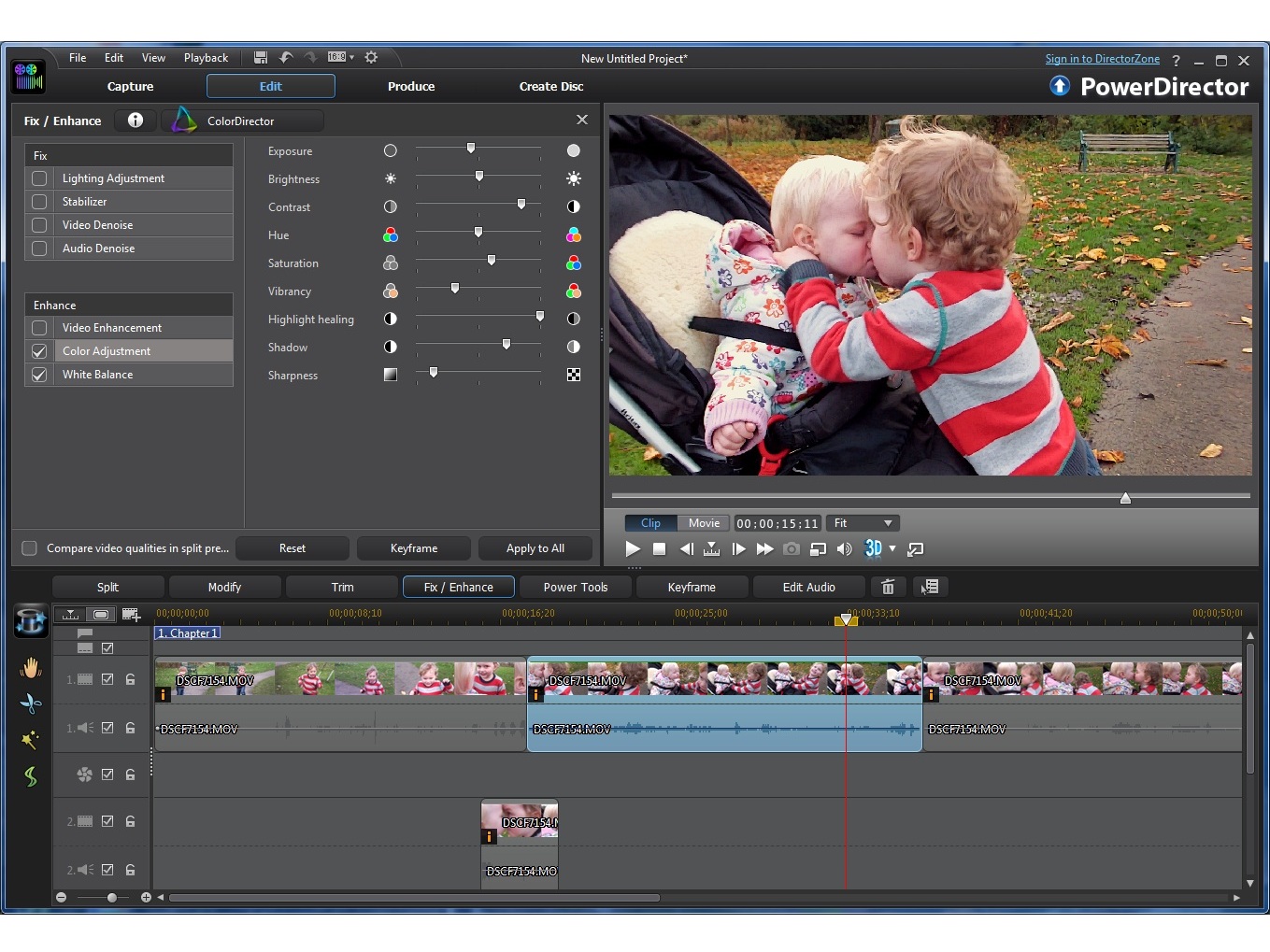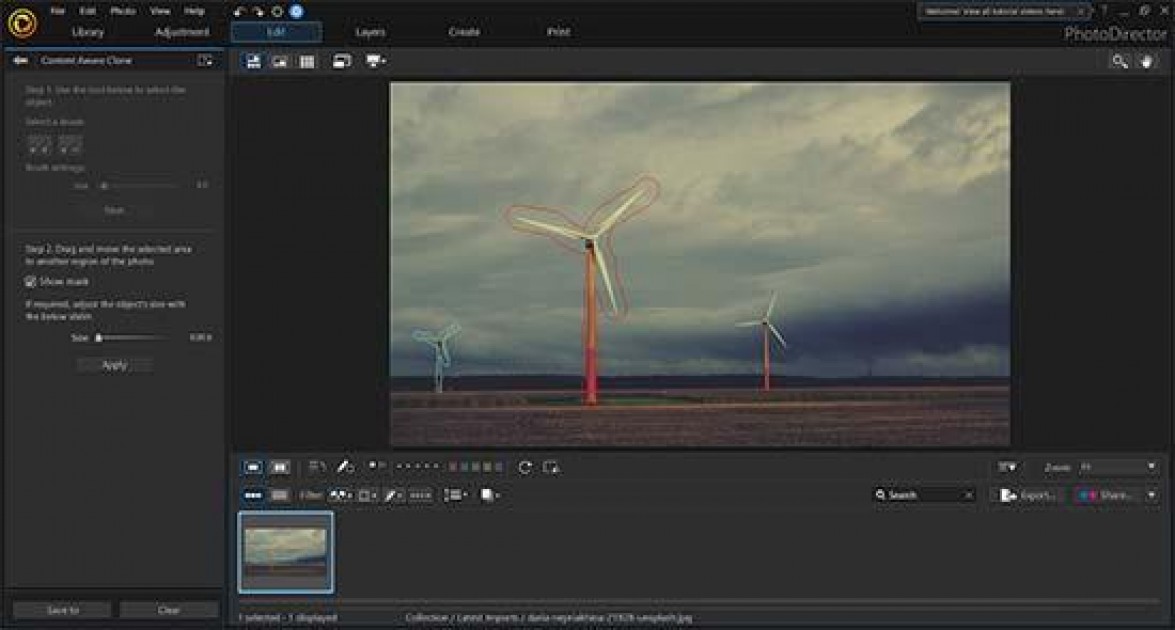This item:Cyberlink PhotoDirector 11 Ultraby CyberlinkWindows 8.1 / 8 / 10 / 7, Mac OS X$79.99 Only 12 left in stock - order soon. Ships from and sold by Amazon.com.
In the Lens Correction section of the Adjustment panel you can use Auto Lens Correction to correct distorted photos, or just manually correct them if they have a keystone effect, fisheye distortion, or vignette effect. Or you can add a custom vignetting effect to photos if required.
- Cyberlink is famous for producing video, and photo editing programs, and 11 is the latest version of their primary photo editing program – PhotoDirector. PhotoDirector was first developed as an alternative to Adobe Lightroom CC. But later on, it converted into a full-fledged photo editing program. With the latest version of the software, Cyberlink brought. Read moreCyberlink PhotoDirector 11.
- Turn Your Photos Into Art. Get to the heart of creative photo editing, fast. With powerful AI tools, eye-catching visual effects, advanced color controls and intuitive layer editing, you can create breathtaking compositions and artistic masterpieces in a snap.
- For the full review please see newest version of Cyberlink's video editing so.
To use Lens Correction on your photos, do this:
1.Click on Adjustment and then on the Manual tab (if necessary).
2.In Global Adjustment Tools, go to the Lens Correction section.
Auto Lens Correction

If you find that many of the photos you shot with your camera appear distorted, you may be able to use the Auto Lens Correction* feature to fix them if a fix for the camera's model and lens is available.
Note: * optional feature in CyberLink PhotoDirector. Check the version table on our web site for detailed versioning information. |
To use Auto Lens Correction on a photo, do this:
1.Select the photo in the photo browser panel that you want to correct and then select Enable correction.
2.By default, CyberLink PhotoDirector will read the photo's metadata, auto select the drop-downs for you, and then correct the photo.
Note: if any of the drop-downs have a None value, there is no correction profile currently available for that lens. See Downloading Lens Profiles from DirectorZone for information on finding the lens profile for your camera. |
3.If the detected lens is incorrect, you can manually select a different Maker, Lens, or Profile if required to correct the photo.
Note: click the button to redo the lens detection and reset any changes made to the drop-downs. |
Downloading Lens Profiles from DirectorZone
If your camera's lens and profile are not available in CyberLink PhotoDirector you can click the button to download more lens profiles from DirectorZone.

Once downloaded, click the button to import it and then click to refresh the profile. CyberLink PhotoDirector should auto detected the imported profile and then correct the selected photo.
Fisheye Distortion
The fisheye distortion* section helps correct photos that appear distorted. Dragging the Distortion slider to the right straightens lines that bend away from the center, correcting barrel distortions. Dragging it to the left straightens lines that bend towards the center, fixing pincushion distortions in photos.

Note: * optional feature in CyberLink PhotoDirector. Check the version table on our web site for detailed versioning information. |
Defringe

The defringe* section allows you to remove color fringing on high contrast edges in your photos. Click to have CyberLink PhotoDirector automatically remove the color fringes in the selected photo.
Note: * optional feature in CyberLink PhotoDirector. Check the version table on our web site for detailed versioning information. |
Use the following sliders to manually remove the color fringes:

•Amount: drag the slider right to increase the amount of defringe applied.
•Threshold: drag the slider to adjust the luminance threshold of color fringes. Pixels are treated as possible fringe pixels if their luminance values are larger than the threshold.
Chromatic Aberration
The chromatic aberration* section helps to remove color distortions, or fringes, along boundaries that separate dark and bright colors in photos. These fringes are caused when a camera lens does not properly focus all the colors at these boundaries.
Note: * optional feature in CyberLink PhotoDirector. Check the version table on our web site for detailed versioning information. |
Use the sliders to fix the chromatic aberration as follows:
•Blue/Yellow: drag the slider to remove blue/yellow fringing.
•Red/Cyan: drag the slider left to remove red/cyan fringing.
Vignette Removal
Use the following sliders to remove an unwanted vignette effect on photos that was caused by a camera lens or the lighting environment:
•Amount: use this slider to adjust the level of vignette removal on the photo.
•Midpoint: drag the midpoint slider to the left to increase the size of the area (towards the center of the photo) where the vignette removal is applied. Drag it right to decrease the size, towards the corners.
Vignetting Effect
You can add custom vignetting effects to photos in CyberLink PhotoDirector.
Note: the vignetting effect sliders also remove unwanted vignette effect on photos, however the degree of application is greater. |
•Shade: use this slider to adjust the shade of the vignetting effect. Dragging the slider to the left darkens the corners of the photo towards black, while dragging it right lightens them towards white.
•Size: use this slider to adjust the size of the vignetting effect. Dragging the slider to the left increases the size of the vignette effect, closing in a circle on the center of the photo.
•Roundness: use this slider to adjust the overall shape of the vignetting effect.
Cyberlink Photodirector 11 Ultra
•Feather: use this slider to adjust the edge sharpness of the vignetting effect. Dragging the slider to the left makes the edge blunt, while to right uses more of a gradient.
